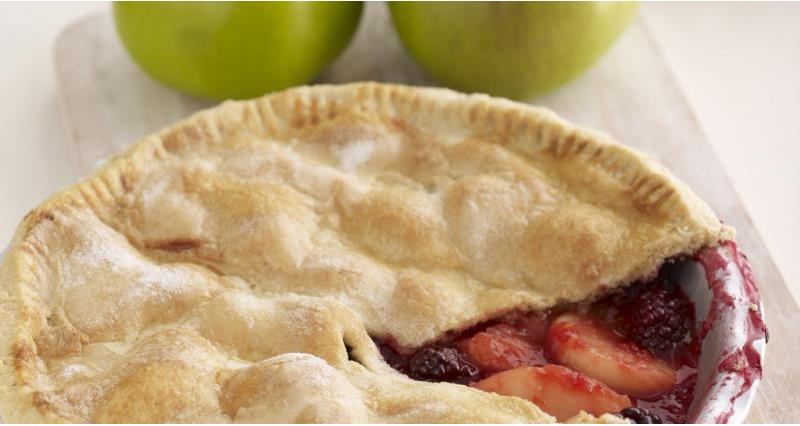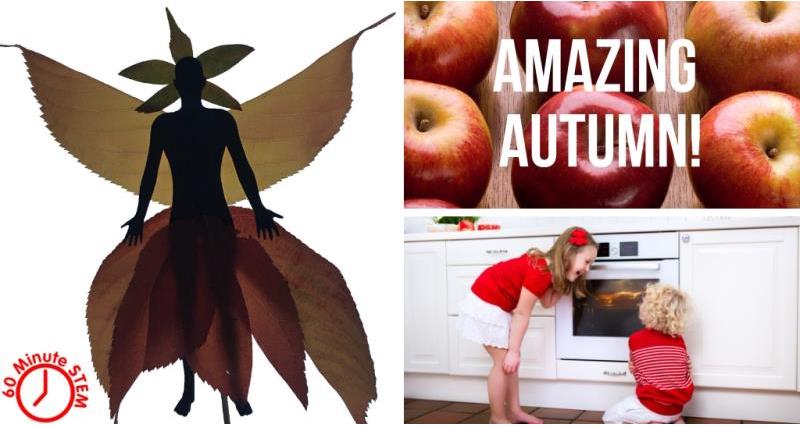Leaf people shadow puppets
Teach your children how shadows are formed and make the most of the beautiful autumn leaves by making some simple leaf people to use as shadow puppets and putting on a show!
Materials:
- Autumn leaves in a variety of colours and shapes
- Puppet person template
- Black card
- Sticks (you could use lolly sticks, wooden skewers or twigs)
- Sticky tape or glue
- Scissors
- A bright torch or lamp
- A white sheet
Method:
- Go for a walk to collect as many different shapes and colours of autumn leaves as you can find. Discuss how you can identify trees by looking at their leaves and ask the children to name as many as they can.
- Ask the children to hold one of their leaves and a sheet of black card up to light. What do they notice? The black card is opaque- this means that it does not let any light pass through it. The leaves are translucent- this means that some light can pass through them. Explain that transparent materials allow light to pass through them completely. Ask the children to think of some examples of a transparent material e.g. a window.
- Cut out the puppet person template and draw around it on the black card.
- Cut out the puppet people.
- Ask the children what they think a shadow is and how they think it is formed. Explain that shadows form when an opaque object blocks light. Shadow puppets work by blocking our light source with our puppet shapes. This will cast shadows in the shape of our puppets onto the white sheet.
- Ask the children to arrange their leaves to make wings, headdresses and clothing for their puppet people. Explain that anything that is on top of the black card will not be seen when you use them as shadow puppets as the black card will stop the light from travelling through it but leaf decorations that stick out from the black card should cast a faint, colourful shadow.
- Hang the white sheet to use as a screen and position the light behind it to create your puppet theatre.
- Ask the children to work in pairs and improvise a simple scene using their puppets.
- Ask pairs to explore what happens to the size of the puppets’ shadows when the light is moved closer and further away from them.
- You could link this to your English teaching by asking the children to make characters from your class book and act out what they think will happen next. It would work especially well with traditional tales or A Mid Summer Night’s Dream.
- Allow time for pairs to perform their scenes using the shadow puppet theatre and present what they discovered about the relationship between the proximity to the light source and the size of the shadow.
Send us a photo of your leaf shadow puppets at ZWR1Y2F0aW9uQG5mdS5vcmcudWs= or @NFUEducation!

Autumnal apple pie
Teach your children how make a basic shortcrust pastry and develop their knife skills by designing and making their own autumnal pie.
Ingredients:
- 350g plain flour
- Pinch of salt
- 190g butter or margarine, diced
- 6 tbsp cold water
- 750g cooking apples, peeled, cored and sliced
- 250g of additional seasonal fruit
- 125g caster sugar
- ½ tsp cinnamon, ginger or mixed spice
- A beaten egg to glaze your pie
Method:
- Design your pie. Think about which flavours will complement your autumn apples and take into account which fruit and vegetables are in season and will be readily available. Blackberries would make a tasty seasonal addition. Think about the design you wish to use on the pie lid.
- Preheat the oven to 220°C/ gas mark 7. Take the opportunity to look at the scale on the oven and work out where the dial needs to be.
- Model how to hold a vegetable peeler correctly and peel an apple.
- Model how to hold a vegetable knife correctly and use the bridge method to cut the apple into equal slices and take the opportunity to discuss fractions by counting how my segments the apple has been cut into and therefore what the denominator would be.
- Measure out the flour. Take the opportunity to look at the scales and work out where the dial needs to be. Discuss the relationship between grams and kilograms. Encourage the children to feel the weight of a large bag of flour (ideally a 1kg one) and compare that to the amount that we need for this recipe. Reinforcing this relationship regularly makes it easier for children to visualise what they need to do when converting between grams and kilograms back in the Maths classroom.
- To make the pastry, sift together the flour and salt into a bowl. Discuss how flour is made
- Measure the butter and show the children how to rub it into the flour with their fingertips using a sprinkling motion. Continue rubbing the butter in until the mixture resembles fine bread crumbs.
- Gradually stir in the water and gather the mixture together into a dough.
- Thinly roll out two thirds of the pastry on a lightly floured surface and use to line a deep 23-cm pie dish.
- To make the filling, place the apple slices, sugar, spice and any additional fruit ingredients you wish to add in a bowl and mix together thoroughly.
- Pour your fruit mixture into the pastry case and add 1–2 tablespoons of water if the apples are not very juicy.
- Roll out the remaining pastry on a lightly floured surface. Use the rolling pin to carefully lay it on top of your pie to form a lid. Press the edges firmly together and trim the excess pastry.
- Use the left over pastry to make shapes to decorate the top of the pie and follow your design.
- Glaze the top of the pie with beaten egg and make 1–2 slits in the pastry.
- Bake in the preheated oven for 20 minutes, then reduce the oven temperature to 180°C/Gas Mark 4 and bake for a further 30 minutes, or until light golden brown. Serve hot or cold, sprinkled with sugar.
Links to the National Curriculum:
Leaf people shadow puppets | |
Subject and topic | National curriculum links |
Year 1 Science: Seasonal changes |
|
Year 1 Science: Plants |
|
Year 2 Science: Uses of everyday materials |
|
Year 3 Science: Light |
|
Autumnal apple pie | |
Subject and topic | National curriculum links |
KS1 Design and Technology: Cooking and nutrition |
|
KS1 Design and Technology: Design |
|
KS1 Design and Technology: Evaluate |
|
Year 1 Maths: Measurement |
|
Year 2 Maths: Measurement |
|
Key stage 2 Design and Technology: Cooking and nutrition |
|
Key stage 2 Design and Technology: Evaluate |
|
